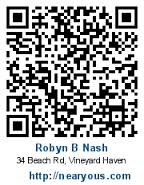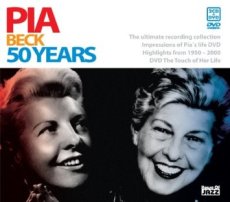
Daily Dose Of Jazz…
Pia Beck was born Pieternella Beck on September 18, 1925 in Den Haag, Netherlands. She was a natural on the piano without significant musical training. In 1945 she joined the Miller Sextet taking the piano chair and vocalist slot touring Belgium, Germany, Sweden and the Dutch East Indies.
By 1949 she started her own combo and her first composition, Pia’s Boogie, became an instant hit, though she never learned to read sheet music. 1952 saw her first visit the United States, toured the jazz club circuit – an annual event until 1964, was nicknamed “The Flying Dutchess” by Time Magazine who also gave her the cover, and was bestowed honorary citizenship of New Orleans and Atlanta.
In 1965 Beck emigrated to Costa de Sol with her life partner and three children, opened a piano bar and when it went bankrupt she opened a real estate firm and wrote travel guides. By 1975 she was on the comeback trail in Scheveningen, Netherlands and once again enjoyed a successful career, albeit, openly exposing her homosexuality during her U.S. tours by resisting against the anti-gay activist Anita Bryant during the late Seventies.
Pia Beck said goodbye to the general public in 2003. The pianist who Oscar Peterson called the best jazz pianist in the world, died at age 84 of heart failure on November 26, 2009 in Malaga, Spain.
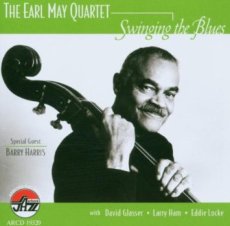
Daily Dose Of Jazz…
Earl May was born on September 17, 1927 in New York City first gravitated to drums, but at 14 acquired an acoustic bass, later making his professional debut at the Bronx’s 845 Club. While working an insurance job by day, 1949 saw May moonlighting across the New York club circuit, eventually catching the attention of drummer Connie Kay, who invited him to sit in behind Lester Young at Harlem’s now-legendary Minton’s Playhouse. He continued honing his craft in clubs like Minton’s Playhouse with musicians such as Lester Young and Mercer Ellington. A protégé of the legendary Charles Mingus, in 1951 Earl joined the Billy Taylor Trio, appearing regularly in such clubs as the Hickory House, Birdland and the Downbeat Club.
During the Fifties Earl also worked with Charlie Parker, Miles Davis, Quincy Jones, Gene Ammons, Sonny Stitt, Chet Baker, and Lorez Alexandria, Webster Young among others and recorded the classic “Lush Life” with John Coltrane. He left the Billy Taylor Trio in 1959 to form his own group and act as musical director and arranger for Gloria Lynne.
By the mid-sixties May took up the electric bass and led the Earl May Quartet at The New York Playboy Club and the group rapidly became the epitome of great music in the New York club scene.
Over the years Earl has performed or recorded with Dizzy Gillespie, Frank Foster, Cab Calloway, Tommy Flanagan, Barry Harris, Junior Mance, Benny Powell, Carmen Bradford, Frank Foster, Dizzy Gillespie, Linda Hopkins, Doc Cheatham, Charles Brown, Claude Williams, Jon Hendricks, Charles McPherson, Marlena Shaw, Ruth Brown, Winard Harper and Phyllis Hyman to name a few more.
Jazz bassist Earl May, one of the most prodigious and prolific bassists of the postwar era, lent his rich, round sound to every session and performance, was the only bassist to play with his left hand but kept the strings in their normal order and was a member of Local 802 since 1947, passed away on January 5, 2008. He was 80 years old.
More Posts: bass
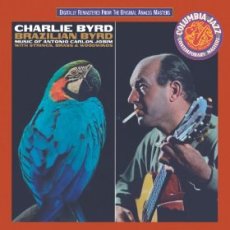
Daily Dose Of Jazz…
Charlie Lee Byrd was born on September 16, 1925 in Suffolk, Virginia but grew up in Chuckatuck, Virginia and his father taught him to play the acoustic steel guitar at age 10. He went on to Virginia Polytechnic Institute, served in the Army and played in the Special Services band in Paris. Returning to New York he studied composition at Hamett National Music School, taking up classical guitar.
Charlie moved to Washington, D.C. in 1950 and studied classical guitar with Sophocles Papas, then with Andre Segovia. By 1957 he teamed up with bassist Keter Betts and started gigging around D.C. for two years, joined Woody Herman for a State Department goodwill tour.
Byrd was first introduced to Brazilian music by his friend radio host Felix Grant who was well known in Brazil in 1960. A subsequent tour of Brazil and he returned home with recordings from Joao Gilberto and Antonio Carlos Jobim. He met with Stan Getz who convinced Creed Taylor, then at Verve Records to produce the album, recording “Jazz Samba” in 1962 in a building adjacent to All Souls Unitarian Church because of the excellent acoustics found there. And his love affair with Brazilian music began.
Over the course of his career he has toured the world, performed at numerous festivals, played with such jazz legends as Les McCann, Zoot Sims, Vince Guaraldi, his brother bassist Joe Byrd, Chuck Redd, Herb Ellis, Barney Kessel and the list goes on.
Charlie Byrd died of lung cancer on December 2, 1999 at his home in Annapolis, Maryland. He was deemed a Maryland Art Treasure in 1997 and knighted by the government of Brazil as the Knight of the Rio Branco.
More Posts: guitar
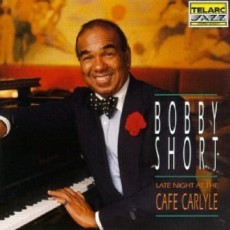
Daily Dose Of Jazz…
Bobby Short was born Robert Waltrip Short on September 15, 1924 in Danville, Illinois. With his mother’s permission he left home for Chicago and began performing as a busker at the age of eleven.
He started working in clubs in the 1940s and in 1968 he was offered a two-week stint at the Café Carlyle in New York City’s Carlyle Hotel, a relationship that lasted until 2004. His seemingly effortless elegance and vocal phrasing were perfected at the feet of Mabel Mercer and Ethel Waters. Bobby’s presentation of unknown songs worth knowing and his infectious good cheer made him tremendously popular and earned him great respect.
He became best known for his interpretations of songs composed by Rodgers and Hart, Cole Porter, Jerome Kern, Harold Arlen, Vernon Duke, Noel Coward and the Gershwin brothers but was equally adept at championing the works of Duke Ellington, Billy Strayhorn, Eubie Blake, James P. Johnson, Andy Razaf, Fats Waller and Bessie Smith.
Bobby Short, the pianist and cabaret singer, recorded 22 albums from 1955 to 2001, appeared in ten movies and 3 television shows and who was instrumental in spearheading the construction of the Ellington Memorial in his beloved New York City, passed away on March 21, 2005.
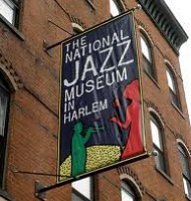
The Jazz Voyager
The National Jazz Museum In Harlem: 104 East 126th Street, New York City, NY 10035 / Telephone: 212-348-8300 / Interim Executive Director – Bill Terry / www.jazzmuseuminharlem.org
The museum dedicated to preservation and celebration of Harlem’s jazz history. The idea for the museum was conceived in 1995. It moved to its current location in the Harlem neighborhood in 2001. The museum emphasizes the role Harlem has played in the nurturing and cultivation of jazz as a home to legends such as Duke Ellington, Benny Carter, Thelonious Monk, Charlie Parker, Charles Mingus, Count Basie, John Coltrane and Billie Holiday.
The National Jazz Museum in Harlem’s Visitors Center features exhibits such as “The Ghosts of Harlem” by American music producer, photographer, author, and museum board member Hank O’Neal. The show includes images of Harlem jazz legends that O’Neal had the chance to interview and photograph for his book of the same name. The Visitors Center also houses books, recordings, and documentaries for guests to enjoy as well as photographs of contemporary jazz musicians by Richard Conde. The museum hosts weekly programs such as the Harlem Speakslecture series and Jazz for Curious Listeners sessions in which jazz novices and experts alike listen and learn about rare jazz recordings. The museum hosts events and programs at jazz venues and other museums such as the Rubin Museum of Art for the Harlem in the Himalayas concert series.
In August 2010 The National Jazz Museum in Harlem acquired nearly 1,000 discs of recorded radio broadcasts made by audio engineer William Savory in the midst of the swing era in the 1930s. The collection includes performances by jazz luminaries such as Louis Armstrong, Billie Holiday, and Benny Goodman. Savory had access to bigger, slower playing aluminum and acetate records and he was able to record much longer clips, capturing extended live shows and jam sessions that many thought would be lost forever. The recordings are being digitized by Brooklyn-based recording engineer Doug Pomeroy, a specialist in audio restoration. The transformation involves cleaning, correcting pitch, removing extraneous noise, mixing and mastering. The Savory Collection has yet to be made public for legal reasons but curious listeners can attend listening sessions at the museum or make appointments to hear the recordings.
The museum plans to move into a permanent location on 125th Street, at Mart 125, a Harlem landmark right across from the historic Apollo Theatre.
Sponsored By



